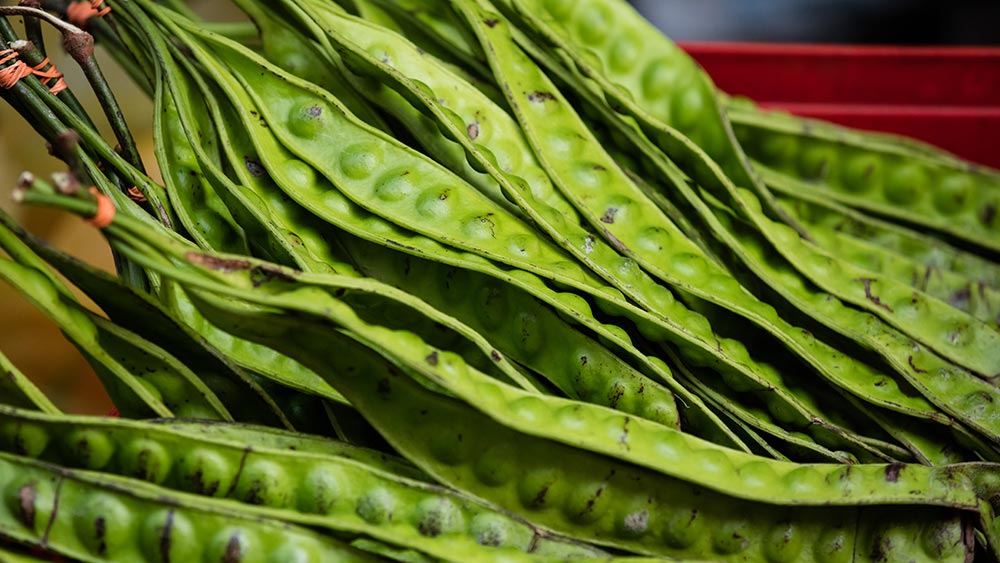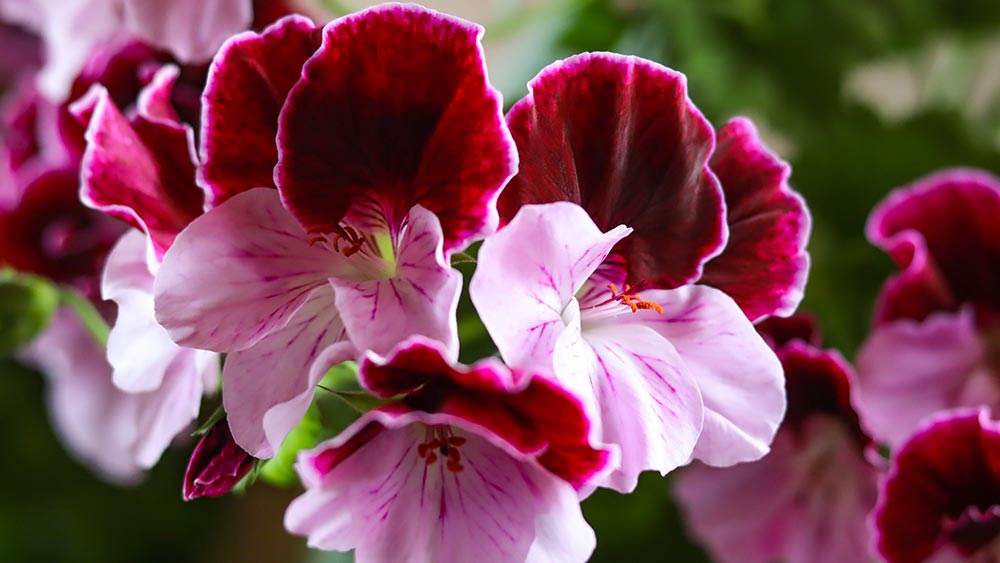
Guar hydroxypropyltrimonium chloride
- Derived from: cluster bean
- Pronunciation: (\ˈgwär\ \hī-ˈdräk-sēˈprō-pəl trī-mō-nē-əm\ \ˈklȯr-ˌīd\)
- Type: Naturally-derived
What Is Guar hydroxypropyltrimonium chloride?

Guar hydroxypropyltrimonium chloride is a white or yellow fine powder derived from guar beans.[1] It is a kind of galactomannan, which is a polysaccharide.[2] The guar bean comes from the guar plant, which is a legume. Major world suppliers include India, Pakistan, and the United States, as well as Australia and Africa.
The plant’s bean has a large endosperm, which is the part of the seed that acts as a food store for the developing plant. Much of that endosperm contains galactomannan gum, which forms a viscous gel called guar gum when mixed with cold water.[3]
What Does Guar hydroxypropyltrimonium chloride Do in Our products?

Guar hydroxypropyltrimonium chloride is often used as an anti-static agent and skin or hair conditioner; it also increases viscosity.[4] Guar hydroxypropyltrimonium chloride is also found in hundreds of personal care products, such as shampoo, conditioner, dandruff treatments, styling products, soap, hairspray, and other products.[5,6,7] We use it as a hair detangler.
How Guar hydroxypropyltrimonium chloride Is Made

Guar hydroxypropyltrimonium chloride production starts by milling guar beans to obtain the natural gum. That gum is then purified, filtered, and reacted with epoxides. One method involves converting guar with 3-chloro-2 hystroxyproply trimethyl ammonium chloride.[8]
Is Guar hydroxypropyltrimonium chloride Safe?

Learn more about this ingredient’s safety when it comes to your health and the environment.
Common Concerns
- Cancer: Low risk
- Allergies and Immunotoxicity: Low risk
- Developmental and Reproductive Toxicity: Low risk
- Use Restrictions: Low
In Cosmetics and Personal Care Products
Guar Hydroxypropyltrimonium Chloride is deemed safe to use in cosmetics and personal care products at a maximum concentration of 0.05%. There have also been zero studies that include information on the toxicity of this ingredient.
For the Environment
Guar hydroxypropyltrimonium chloride is biodegradable and has a very low tendency for bioaccumulation.
Frequently Asked Questions

Learn more about this ingredient’s properties and benefits.
Is Guar Hydroxypropyltrimonium Chloride natural or synthetic?
Guar hydroxypropyltrimonium chloride is sourced from the seeds of the guar plant, making it a natural ingredient and an organic compound.
What’s the difference between Guar Hydroxypropyltrimonium Chloride and guar gum?
When it comes to Guar Hydroxypropyltrimonium Chloride vs guar gum, the former is a derived form of guar gum. While also sourced from the guar plant, guar gum is a polysaccharide, while guar hydroxypropyltrimonium chloride is a chloride.
Is Guar hydroxypropyltrimonium chloride a good ingredient for your hair?
Guar hydroxypropyltrimonium chloride is cationic, meaning positively charged. This makes it an ideal ingredient to neutralize negative charges in your hair that leave it tangled or full of static. It is also effective at reducing frizz and adding moisture.
What are the side effects of guar hydroxypropyltrimonium chloride?
An allergy to guar hydroxypropyltrimonium chloride is possible and can potentially irritate sensitive skin if the concentration exceeds 1.0%. Always consult a doctor before using new products on your skin if you have sensitivity concerns.
Why Puracy Uses Guar hydroxypropyltrimonium chloride

We use guar hydroxypropyltrimonium chloride as an alternative to harsh silicones. Whole Foods has deemed the ingredient acceptable in its body care quality standards, and the Cosmetics Ingredient Review has deemed the ingredient safe for use in cosmetic products.[9,10] Research shows the ingredient is not a skin irritant or sensitizer.[11,12]
Sources
[1] Cosmetic Ingredient Review
[2] Personal Care Council
[3] Purdue University Horticulture & Landscape Architecture
[4] Personal Care Council
[5] Personal Care Council
[6] Environmental Working Group
[7] Cosmeticsinfo.org
[8] Personal Care Council
[9] Whole Foods Market
[10] Personal Care Council
[11] McCarty, J. D. Weiner M. Freeman C. Aguinaldo E. R. and Fletcher M. J. “Primary skin irritation and ocular irritation studies on five food additive plant gums”. Journal of the American College of Toxicology 1990;1(1):50-51
[12] Malo, J.-L., Cartier, A., L'Archeveque, J., Ghezzo, H., Soucy, F., Somers, J., and Dolovich, J. “Prevalence of occupational asthma and immunologic sensitization to guar gum among employees at a carpet-manufacturing plant.” Journal of Allergy and Clinical Immunology. 1990;86(4 PART 1):562-569


























